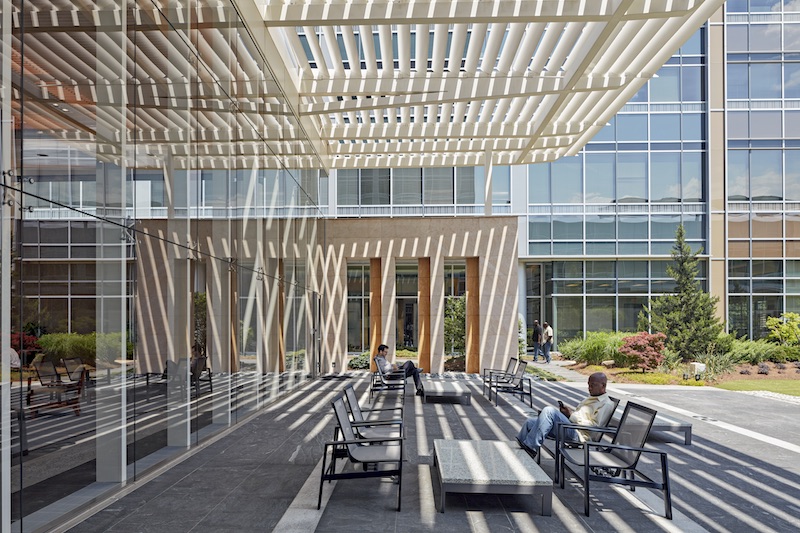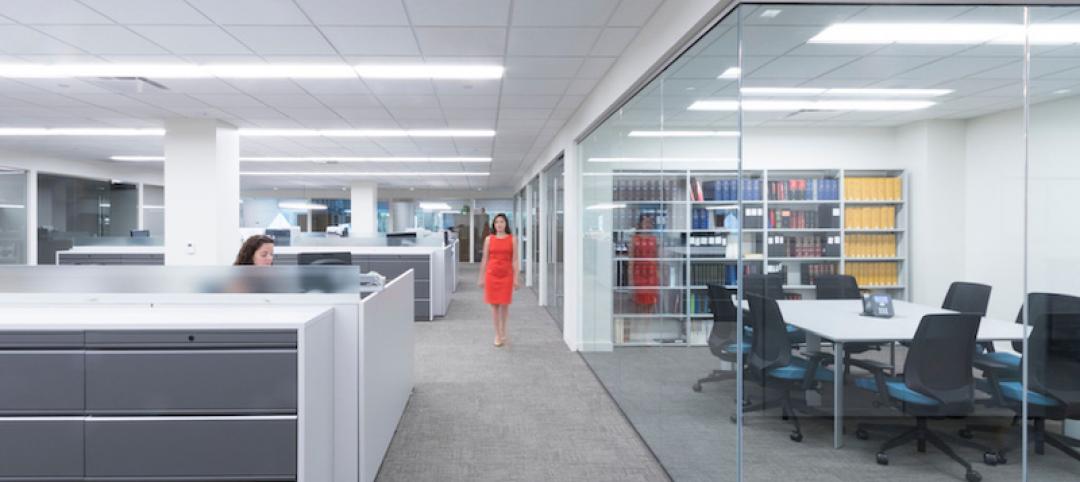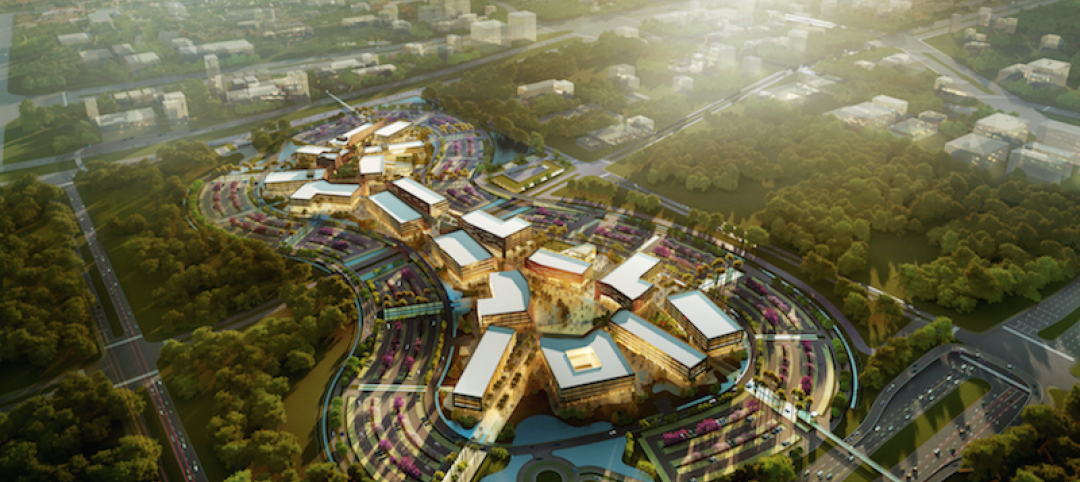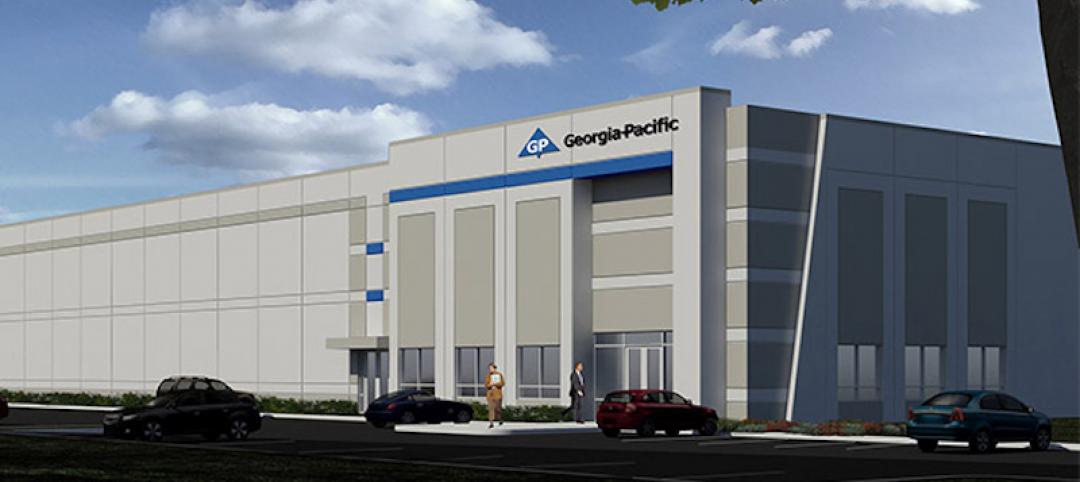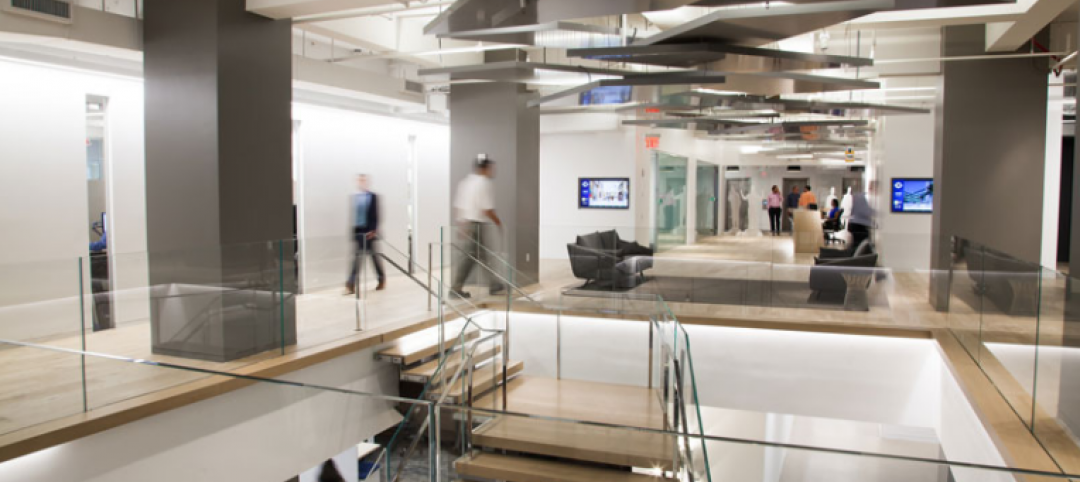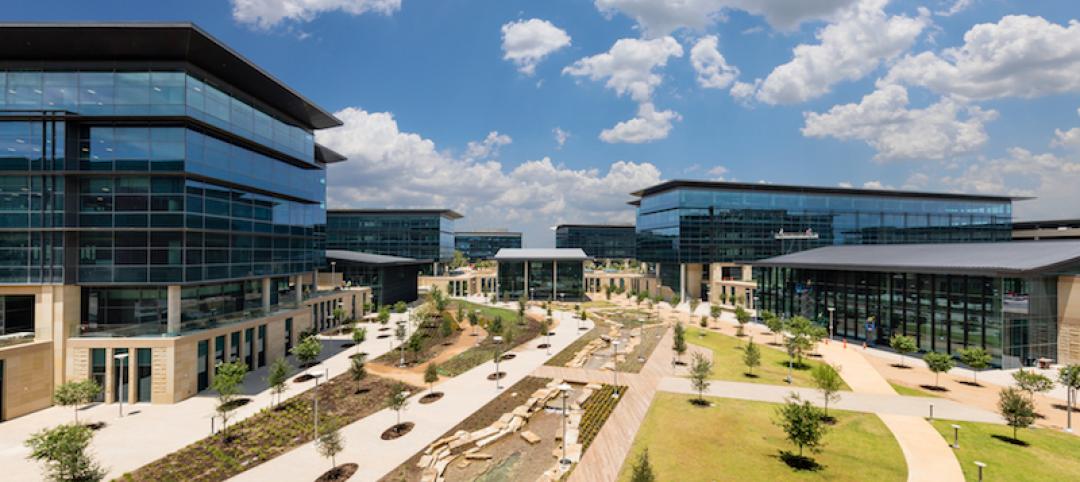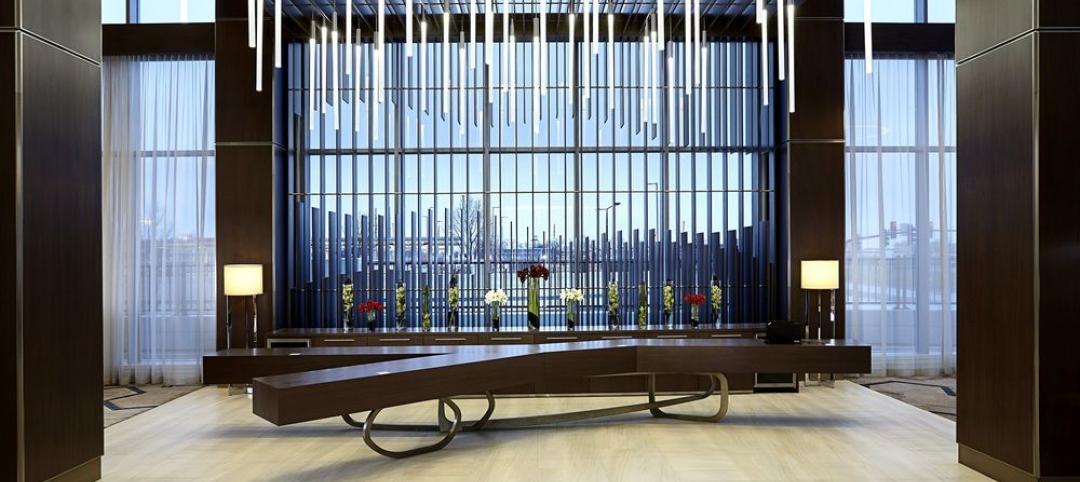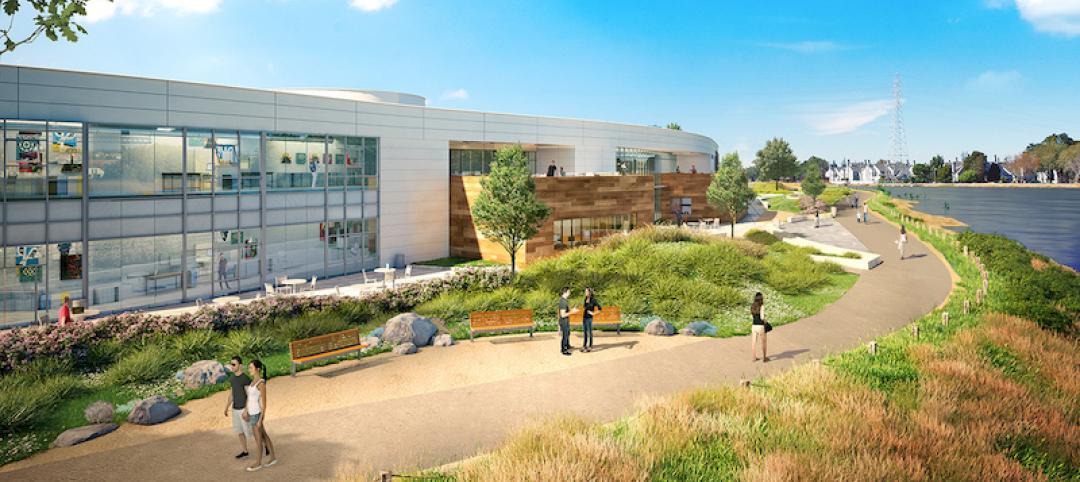A generational shift and advances in technology are changing the work environment. Corporate America seeks to draw young workers who, rather than swinging hammers, wield mobile devices to generate ideas and produce results. Today’s college graduates have experienced an environment with more amenities than ever before, and with them comes new expectations about the workplace: “I'm going to work the way I want. I'm going to come up with an idea with my buddies at Starbucks and revolutionize the things." This is the new and pervasive culture that is redefining corporate architecture.
Much has been written about the Millennial generation. Their emergence into the working world comes with a sense of openness for all. Thus, the challenge is more than designing building and spaces to attract, inspire and retain one micro-generation. Today’s workplace requires designers and employers to look holistically at the organization’s culture, its criteria for success, and its place in the world. Shaping an effective workplace is about more than rethinking its architecture. Designers must push beyond the idea of ‘this is the way we do it here’ and drill down to the intentions and vision for that specific business.
Out-of-the-Cubicle
Technology has altered the work process, and in many ways its product, but the rules of workplace engagement have changed too. What is today’s expectation of how we should work? Not long ago, an employee was given a task and went to their office or cubicle to accomplish it. The employee with their ‘nose to the grindstone’ was the ideal. Today’s model says, "Yes, an employee sits in that spot, but also makes impactful contact with others." At McKinney, an advertising firm in Durham, creative directors have the smallest offices and aren’t expected to be in their office until after 5 o'clock; they're expected to be out talking to their teams.
The push for mobility and flexibility is not tied to any one generation or corporate level. Now, even CEOs are taking their laptops and smartphones to Starbucks in search of a different type of space. People crave the freedom to move around, within, and beyond a designated space. Many clients still want private offices, but they’re also looking for areas to collaborate and varied meeting spaces. Some companies are reducing office size because they want employees out in the organization or the community, not behind a desk.
With more than just a nod to office redesign, companies are relocating from the suburban areas to more central locations near public transportation and amenities. These metro locations place them closer to the people they want to hire and retain—an exciting, urban minded, and creative new workforce. But this trend is about more than just convenience: a 2015 survey of Millennials found 77% choose a workplace based partly on whether the company has “a sense of purpose,” and revitalizing neglected urban centers is considered both green and socially responsible. The trend toward urbanization is an environmental plus, because city dwellers drive less, live in spaces that use less energy, and require fewer resources than their suburban counterparts.
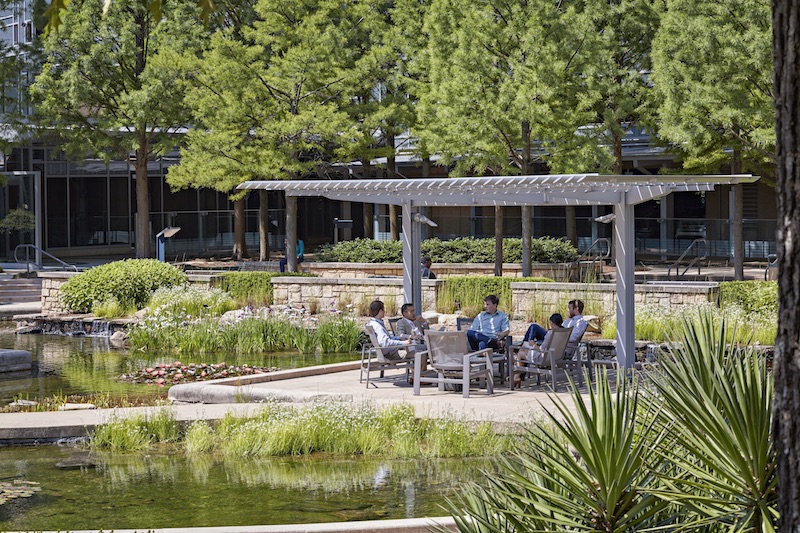 Courtesy Robert Benson Photography.
Courtesy Robert Benson Photography.
Creativity’s Stock is Up
Creativity in the workplace is no longer an option. On the heels of successful enterprises such as Apple and Google, fostering creativity expands an organization’s potential. More traditional corporate cultures—law firms, sales organizations, and service companies—have made significant advancements in valuing creativity. But how is creativity added to a culture that never had it before? Simply adding a new collaboration or creative space and assuming staff, who come from a traditional work world, will change their behavior is a fallacy and can cause skepticism.
Reflecting and facilitating creativity in the workplace means allowing for flexibility and different working styles, and both aid in accommodating all levels of diversity. Space for moving around, getting out of an individual workspace and talking as a group, and collaborating with multiple team members requires different types of spaces and furnishing. The Dilbert-type cubicle is the antithesis of creativity. Take away the cubicle and people are suddenly in the same room together. Then, it's not just fulfilling a task— the individual is in a place where the metrics are group oriented. This is where creativity kicks in, and that's how the business world is transforming. Most architectural and design firms utilize open studios for exactly this reason.
Open, flexible space is advantageous for organizations, which can function like a workplace laboratory, modifying and adapting to changing needs. For example, rather than just adding conference rooms, multifunction spaces simply do more: roof terraces, café, breakout, and meditation areas allow equally for meetings, conferencing, and individual focus. GlaxoSmithKline recently put ‘phone rooms’ into their offices, so employees have a private place to use their cellphones. And they aren’t alone as companies as diverse as Slate Magazine as well as laboratories and construction companies make way for a variety of diverse, flexible spaces.
 Courtesy Duda|Paine Architects.
Courtesy Duda|Paine Architects.
Architecture and HR
Today, mobility and flexibility free staff to work where, when, and how they want, but that freedom has eroded our sense of where work stops. ‘Office hours’ can mean 24/7 with the technology created in just one generation. Employees must become stewards of their own work/life balance. In response, companies are thinking more holistically and asking architecture to project this new attitude.
Shaping the right office environment is an investment and a company’s best recruiting tool. At Cox Headquarters, a prospective recruit is typically convinced after a tour of the amenity rich campus, which in addition to a gym and café options, includes landscaped gardens. Cox’s goal is to do more than recruit great employees, it's retention.
The new generation employee also cares more about health and is infinitely more informed on the topic than previous generations. With their professional expectations and spatial needs shaped by experiences in education, they see the balance between good health and good work as essential. Connecting a work environment more directly to the outdoors, as Cox has done, is one approach.
Making Work Visible
An e-blast might not be the best way to showcase an organization’s work. More and more organizations are looking to gallery spaces and ‘innovation halls’ to showcase what they do to the public, future recruits, and staff. The idea of being able to see what people in a company are working on opens everyone to being informed and inspired. At the award-winning John Deere Moline headquarters, Eero Saarinen and Kevin Roche made a conscious decision for staff members to enter the headquarters building through a two-story museum, which includes a 3-dimensional mural of the company’s history, as well as vintage and new tractors, bulldozers, and other equipment. Thus, whether an employee balances the books, works in HR, or designs machinery, they experience firsthand what John Deere is all about.
Stop Blaming Millennials!
The new office environment—diverse, flexible, highly accommodating and highly functional—transcends generation. Its advanced technology, mobile-readiness, openness and variety of spaces speak to how all of us, not just today’s graduates, want to work and be successful today.
 Courtesy Robert Benson Photography.
Courtesy Robert Benson Photography.
Related Stories
Office Buildings | Sep 27, 2017
Gensler designs New Jersey law firm’s new headquarters space
The HQ occupies 75,000 sf in a 400,000-sf suburban office building.
Mixed-Use | Sep 26, 2017
Perkins+Will designs new international business community in Cali, Colombia
The new free trade zone is designed to resemble a small village.
Office Buildings | Sep 20, 2017
Five Stantec offices move into one Fifth Avenue location
The new location provides the firm with 40,000 sf of space.
Industrial Facilities | Aug 29, 2017
Clayco completes construction on Georgia-Pacific Distribution Center
The new facility expands on the company’s old distribution facility by over 300,000 sf.
Green | Aug 24, 2017
Business case for WELL still developing after first generation office fitouts completed
The costs ranged from 50 cents to $4 per sf, according to a ULI report.
Market Data | Aug 20, 2017
Some suburban office markets are holding their own against corporate exodus to cities
An analysis of mortgage-backed loans suggests that demand remains relatively steady.
Office Buildings | Aug 17, 2017
Toyota’s new North American HQ opens in Plano
Toyota invested $1 billion in the project, which was designed by Corgan.
Lighting | Aug 2, 2017
Dynamic white lighting mimics daylighting
By varying an LED luminaire’s color temperature, it is possible to mimic daylighting, to some extent, and the natural circadian rhythms that accompany it, writes DLR Group’s Sean Avery.
Office Buildings | Aug 1, 2017
Corporate values as workplace drivers
Connecting personal values to company values is important to millennial workers.
K-12 Schools | Aug 1, 2017
This new high school is the first to be built on a tech company’s campus
Design Tech High School, located on Oracle Corporation’s Headquarters campus, will span 64,000 sf across two stories and have a capacity of 550 students.


